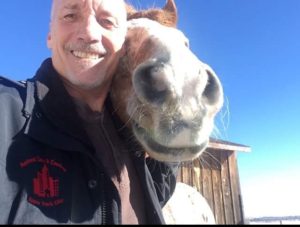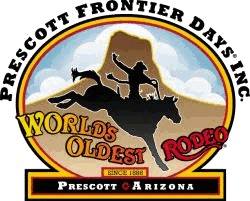 The US Postal Service is issuing these stamps to celebrate America’s love of horses. Once instrumental in the early economic development of the United States, horses are now valued athletes and loyal companions, and are important in law enforcement, forestry, entertainment, equine therapy and cattle ranching. This pane of stamps features five photographs of beautiful equines, each in profile. Derry Noyes, an art director for USPS, designed the stamps with existing photographs by Stephanie Moon and Karen Wegehenkel. Continue reading “USPS Celebrates America’s Love of Horses”
The US Postal Service is issuing these stamps to celebrate America’s love of horses. Once instrumental in the early economic development of the United States, horses are now valued athletes and loyal companions, and are important in law enforcement, forestry, entertainment, equine therapy and cattle ranching. This pane of stamps features five photographs of beautiful equines, each in profile. Derry Noyes, an art director for USPS, designed the stamps with existing photographs by Stephanie Moon and Karen Wegehenkel. Continue reading “USPS Celebrates America’s Love of Horses”
The Timeless Connection Between Humanity and Equines
In the bustling hum of urban life and the echoes of history’s whispers, there exists a profound and enduring tale of kinship – the timeless bond shared between humans and equines. As we venture into the depths of this intricate relationship, the narrative unfolds, revealing a tapestry woven with threads of companionship, resilience, and shared destinies. Continue reading “The Timeless Connection Between Humanity and Equines”
history’s whispers, there exists a profound and enduring tale of kinship – the timeless bond shared between humans and equines. As we venture into the depths of this intricate relationship, the narrative unfolds, revealing a tapestry woven with threads of companionship, resilience, and shared destinies. Continue reading “The Timeless Connection Between Humanity and Equines”
Celebrating the Diversity of Equines
Today, I want to expand upon our recent discussion concerning equine welfare and the rich diversity found within the equine family. The intricate tapestry of their roles in our lives, from their remarkable qualities to their profound impact on human society, offers a captivating narrative that deserves our appreciation and admiration.
concerning equine welfare and the rich diversity found within the equine family. The intricate tapestry of their roles in our lives, from their remarkable qualities to their profound impact on human society, offers a captivating narrative that deserves our appreciation and admiration.
So, in today’s blog, I want to venture further into the heart of what makes each type of equine so unique, as well as share some inspiring words that have sought to capture their essence across the ages. Continue reading “Celebrating the Diversity of Equines”
Ensuring the Welfare of Equines in Today’s Economy
 Today, I want to address a topic that’s very close to my heart – the welfare of equines in our uncertain economy.
Today, I want to address a topic that’s very close to my heart – the welfare of equines in our uncertain economy.
In these challenging times, it’s more important than ever to ensure our beloved horses, donkeys, mules, and all various subspecies, hybrids, and regional variations within these categories, receive the care, respect, and attention they deserve. Continue reading “Ensuring the Welfare of Equines in Today’s Economy”
Rodeo: Legalized Cruelty by Ed Boks

Imagine a person chasing a terrified puppy across an open field. The puppy is suddenly and brutally clothes-lined by a rope thrown around her neck from behind. Her legs fly out from under her and she falls on her back with a thud. Her attacker grabs her, lifts her up off the ground and body slams her. She would cry out, but she can’t breathe. In shock, the puppy’s legs are quickly tied together so she can’t run from her tormenter; and she is dragged by the neck with the rope.
Now imagine this scene occurs not in an open field, but in an arena filled with hundreds, perhaps thousands, of cheering fans; and the puppy is not a dog, but an animal sometimes referred to as a “doggie” – a baby calf. Continue reading “Rodeo: Legalized Cruelty by Ed Boks”
The last rodeo by Ed Boks
 Today is opening day for Prescott Frontier Days considered the World’s Oldest Rodeo. Established in 1888, the event has occurred over every 4th of July weekend for 130 years – and features breath-taking performances that can result in animals suffering broken ribs, backs, and legs, torn tails, punctured lungs, internal organ damage, ripped tendons, torn ligaments, snapped necks, and agonizing deaths.
Today is opening day for Prescott Frontier Days considered the World’s Oldest Rodeo. Established in 1888, the event has occurred over every 4th of July weekend for 130 years – and features breath-taking performances that can result in animals suffering broken ribs, backs, and legs, torn tails, punctured lungs, internal organ damage, ripped tendons, torn ligaments, snapped necks, and agonizing deaths.
How can such mayhem exist in a state where animal cruelty is a felony? In Arizona, rodeos are exempt from anti-cruelty laws. In fact, the State of Arizona sanctions animal cruelty in activities involving hunting, ranching, farming, rodeos, shows and security services (ARS § 13-2910.05. Exempt activities). Continue reading “The last rodeo by Ed Boks”
Setting the record straight by Ed Boks
Over the past few days the LA Daily News misrepresented LA Animal Services on two occasions. The first instance was an article by Rick Orlav entitled, “Valley’s horse-rescue plan needs work”.
While I’ll agree that all emergency response plans need to be subject to constant review and improvement, the article suggests LA Animal Services’ role in the Sayres Fire is not clearly understood. LA Animal Services was there. LA Animal Services rescued over 400 horses. However, no mention was made of the fact that LA County Animal Care & Control was a no show until the rescue effort was nearly complete.
The only confusion during this entire episode resulted from whether LA Animal Services should go into the County to rescue horses outside of our jurisdiction or wait until County Animal Care & Control arrived. When it was clear horses would be lost if we didn’t act quickly, we of course went in – and as a result no horses were lost.
I made the recommendation to include a representative from Animal Services in the Emergency Operations Center to Councilman Dennis Zine nearly two years ago but to date he has taken no action and seems unaware of LA Animal Services critical role in these matters.
LA Animal Services performed exceptionally well and effectively saved hundreds of horses. They should be recognized for this heroic achievement – not criticized for the shortcomings of another department that couldn’t even get there on time.
The next article was an op-ed piece that appeared a few days earlier. I understand editors apply less scrutiny to want-a-be reporters, but LA Animal Services is such an open book that at any time the Daily News could simply have made a phone call to verify the facts before propagating the malicious myths manufactured by a chronic critic.
I refer to the piece entitled, “Finally, the end of an Ed Boks era.” The author suggests LA Animal Services is somehow broken and “spiraling out of control” and the only remedy is to follow his inexperienced advice. So, is LA Animal Services broken? Let’s look at the facts.
Keep in mind this partial list of accomplishments was achieved while the Department experienced its most historic growth and most severe budget cuts and staffing shortages simultaneously; a significant challenge for any manager.
Still, we built the highest volume pet adoption program in the nation; achieved the lowest euthanasia rates in the Department’s history; opened six LEED (Leadership in Energy and Environmental Design) Certified animal care centers; increased staff size 100%; and recruited a record number of volunteers.
We firmly established the Animal Cruelty Task Force; improved Pet Shop and Circus Animal Regulations raising the standards for humane care; formed a coalition of over 100 animal welfare organizations to enhance our adoption efforts; produced two animal welfare television programs, and established an exceptional veterinary medical program and executive team.
Not only is LA Animal Services not broken, it is better positioned than ever to help establish LA as the most humane city in the nation.
If you would like to be part of a winning team please consider volunteering with LA Animal Services and/or by making a donation to one of LA Animal Services life-saving programs.
